How many exercises do you know? Dozens? Hundreds? Thousands? It’s a good thing you do, because most clients like variety in their workout routines. Sometimes it seems as if there couldn’t possibly be anything new to teach. Within each exercise, however, there are subtle changes you can make to prevent injury and enhance performance.
For example, you probably know dozens of variations for a squat: legs wider, legs narrower, toes out, add a hop, hold it longer, etc. When doing a wide squat, most people feel different muscles working than when performing a narrow squat. While an EMG would show which muscles are more active in each variation, clients can learn to feel the different muscles working, too. If your client can’t feel the difference, anatomical knowledge and effective cueing can help increase his or her body awareness, which will help prevent injury and enhance performance.
As a trainer, how specific are you when cueing your clients? Do you suggest arms wider or narrower for push-ups and pull-ups? Have you tried getting even more specific by cueing hip or shoulder internal/external rotation during an exercise? How about pronation/supination of the forearm? These slight changes create exercises that cover a wider range of motion, strengthening the joints more thoroughly for daily activities and sports.
Here are four common exercises that, by making a slight movement change, you can change the primary muscles being strengthened. When trying these variations, use a lighter weight and go slowly. You’ll likely find that you’ll be using muscles that aren’t always targeted by traditional exercises.
Leg Curls With Internal Rotation
When doing leg curls on a machine, internally rotate the tibias to engage the medial movers more effectively. Three muscles that perform knee flexion and internal rotation all attach on the pes anserine of the tibia on one side. Locate this landmark on yourself—it’s at the superior/medial part of your tibia bone, just below the kneecap. It’s a flat surface that’s shaped like a triangle. On the other side these muscles attach as follows:
- Sartorius - anterior superior iliac spine (ASIS)
- Gracilis - ramus of pubis
- Semitendonosus - ischial tuberosity (sit bone)
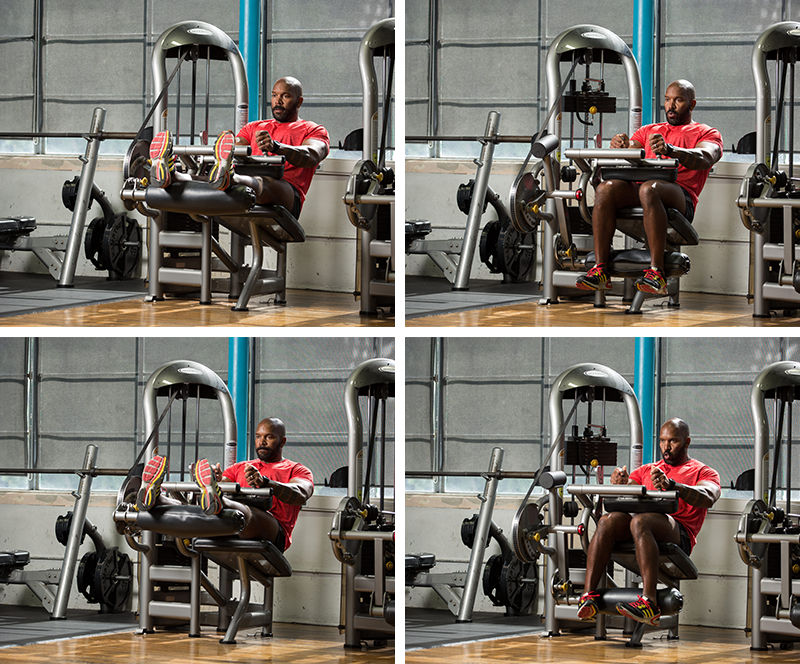
Calf Raises With External or Internal Rotation
Try performing calf raises with your hips externally or internally rotated by turning your feet out or in. This change in angle recruits the plantar flexion muscles differently because the position of the calcaneus changes. The calcaneus is your heel bone and acts like a rudder on a boat when you turn your foot in and out. Three muscles that perform plantar flexion attach to the calcaneus on one side and on the other:
- Gastrocnemius - condyles of femur
- Soleus - medial tibia and fibula
- Plantaris - lateral condyle of femur
Shoulder External Rotation With Abduction
Rotator cuff exercises change significantly when adding 5 to 10 degrees of abduction of the humerus. Strengthening the entire range of this motion is particularly important for athletes, such as baseball or tennis players, that rotate and abduct their shoulder repeatedly. The infraspinatus muscle, which is the main external rotator of the humerus, has four different sections. It attaches in layers on the posterior scapula and into the greater tubercle of the humerus.
Adding abduction to rotator cuff exercises can be tricky, so try this: Have your client lie on his or her back with the scapula stabilized. Have the client abduct from there while you hold a resistance band—you can easily change the angle by changing where you stand. You can also use your hand as resistance depending on how much they need.
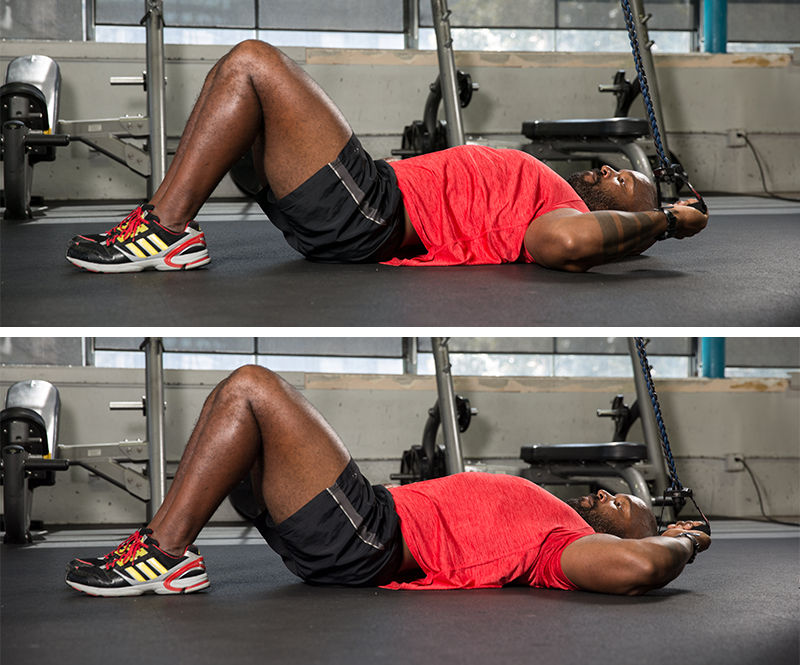
Biceps and Triceps With Forearm Supination or Pronation
Now you’re getting the hang of it. As you pronate and supinate during bicep curls or tricep extensions, the position of the radius and ulna change, affecting which muscles get recruited.
The triceps muscles and brachialis attach to the olecranon process of the ulna (elbow) on one side and on the other:
- Lateral triceps - lateral humerus
- Medial triceps - medial humerus
- Long triceps - lateral/superior scapula
- Brachialis - anterior humerus
The biceps muscles attach to the radius on one side and on the other:
- Short biceps - coracoid process of scapula
- Long biceps - glenoid fossa of humerus
- Brachioradialis - lateral humerus
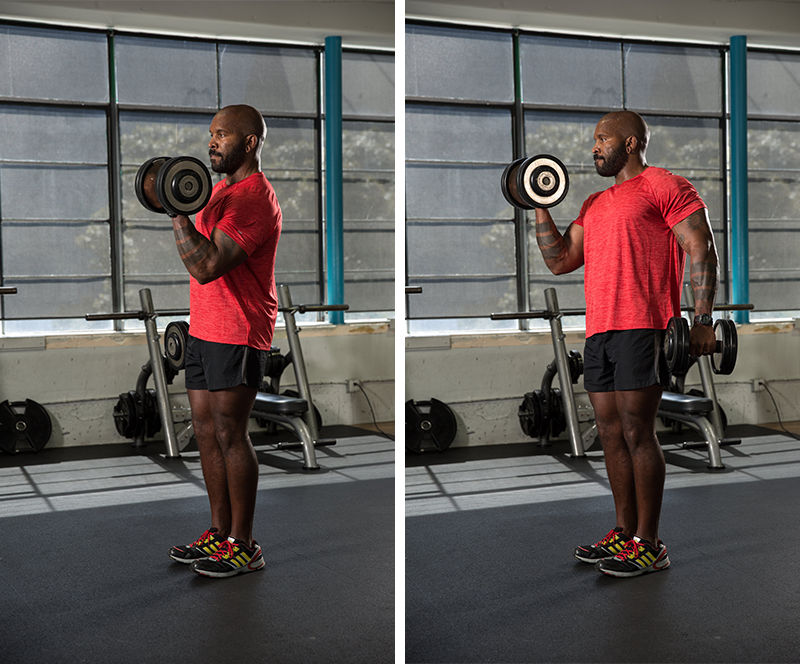

Deliver the individualized programs people need to adopt long-term, healthy behaviors with ACE’s Personal Trainer Certification.




 by
by 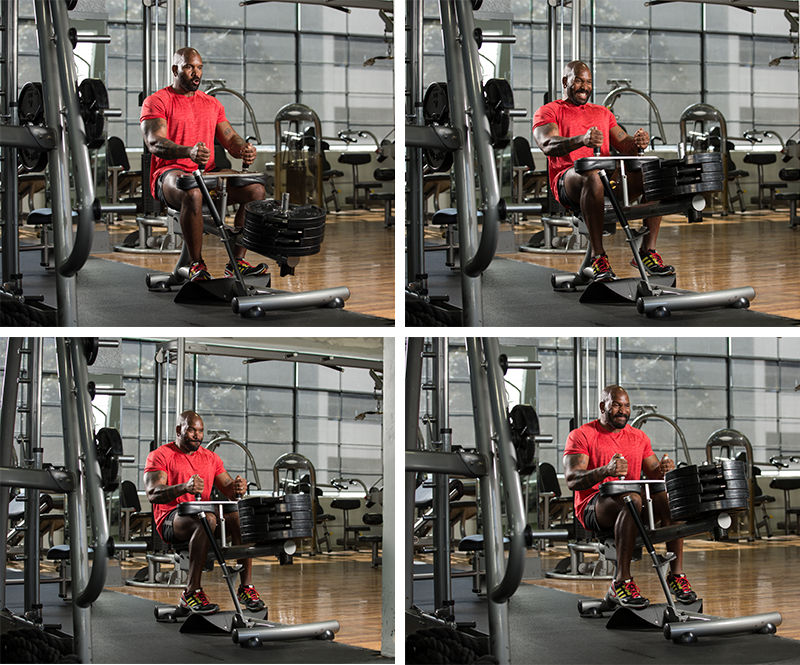


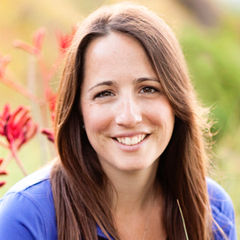


 by
by